Exhibition Design
Still Undead, Popular Culture in Britain Beyond the Bauhaus, is the UK chapter of Bauhaus Imaginista, a research project that explores the legacy of the Bauhaus from a transnational perspective. Taking as its starting point Kurt Schwerdtfeger’s 1922 reflective coloured light projection, the exhibition brings together diverse content spanning fifty years which examines how the methods and concepts of the Bauhaus were rejected, refracted and adapted in Britain. Each of the four galleries at Nottingham focuses on a different period and manifestation of the school’s legacy. A distinct spatial strategy was conceived for each of these rooms in response to the works presented within them.
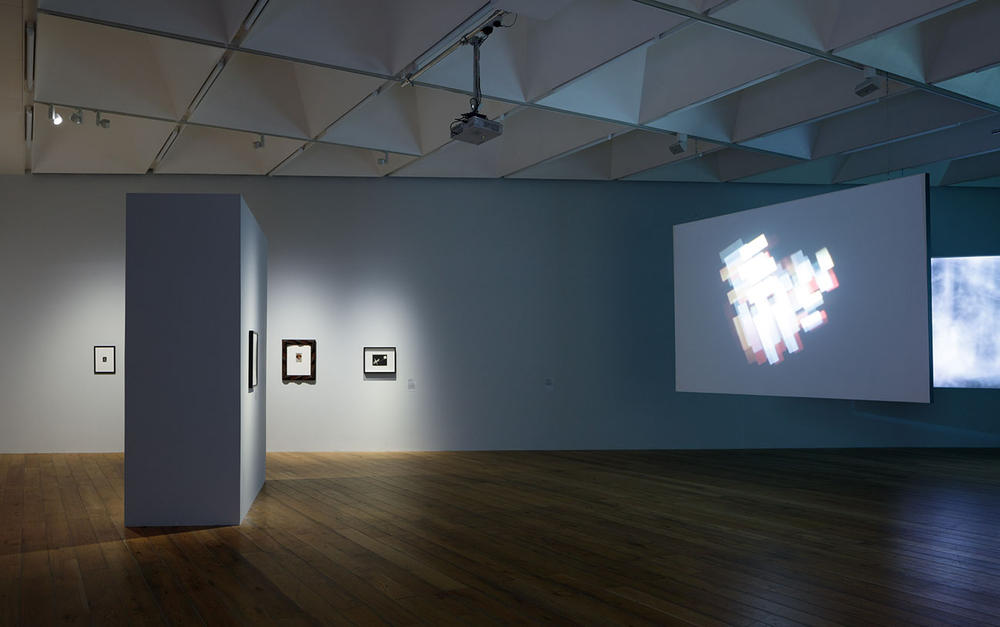
Entry as fragment of Schwerdtfeger’s projection device
Gallery 1 presents experimental projections from the Bauhaus archive that combine moving abstract figures, light forms and sounds and were originally screened at Bauhaus parties and festivals in the 1920s. At Nottingham, the films are suspended throughout the gallery. The visitor can move around and between them and view them simultaneously.
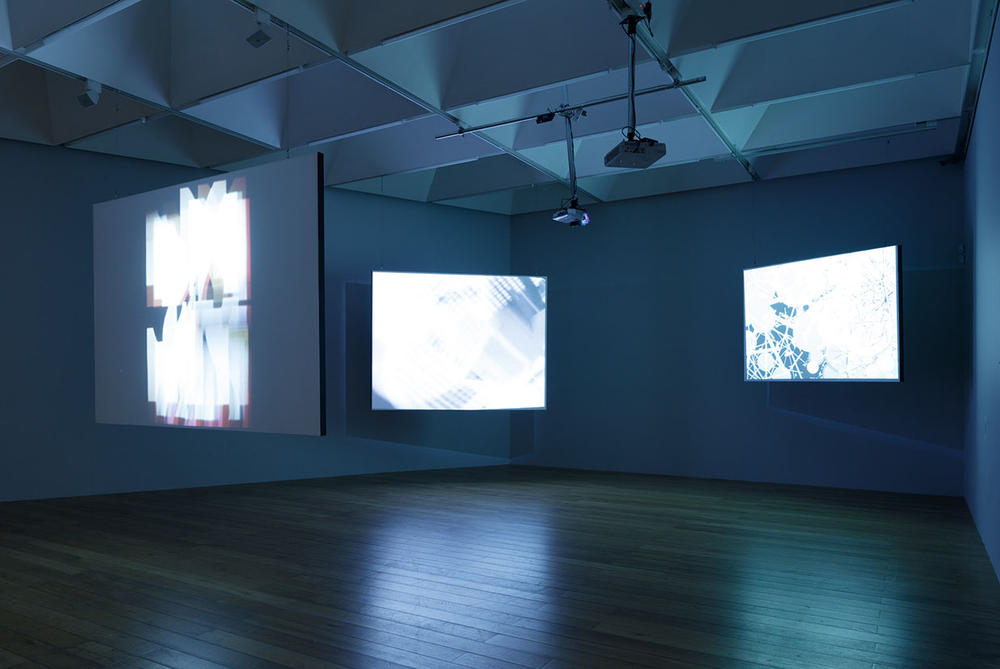
Visitors move between and around suspended projections
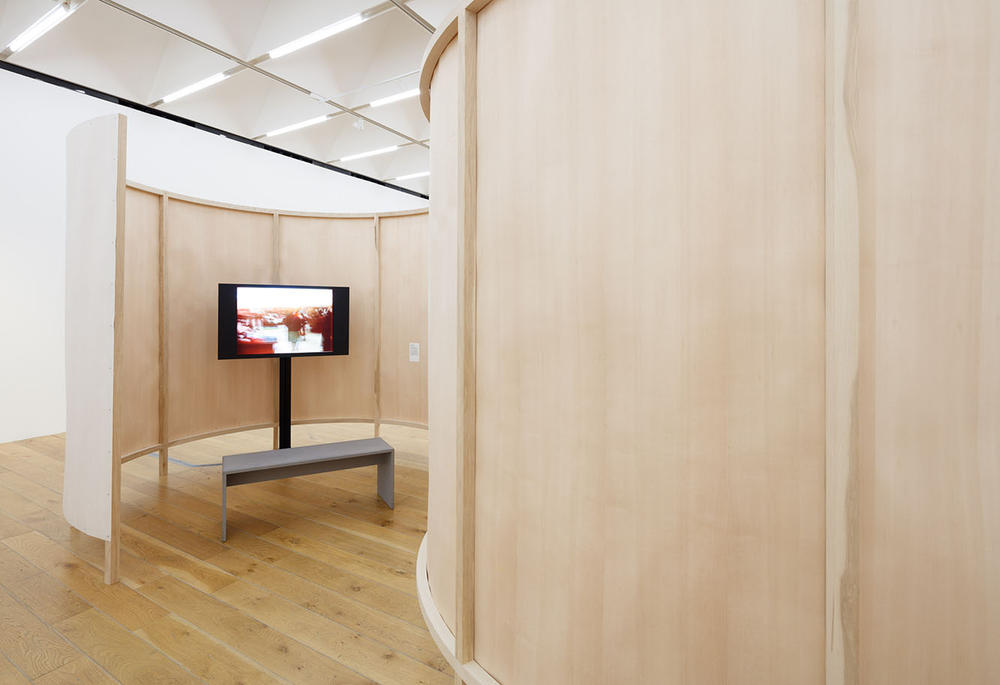
Gallery 2 presents two distinct bodies of work: the production of Bauhaus emigrees during their time in Britain in the 1930’s and the emergence of the basic design course in British art schools which was based on Bauhaus pedagogy. This content is separated by a figure of eight, steam bent timber screen that holds films and opens out to each side of the gallery.
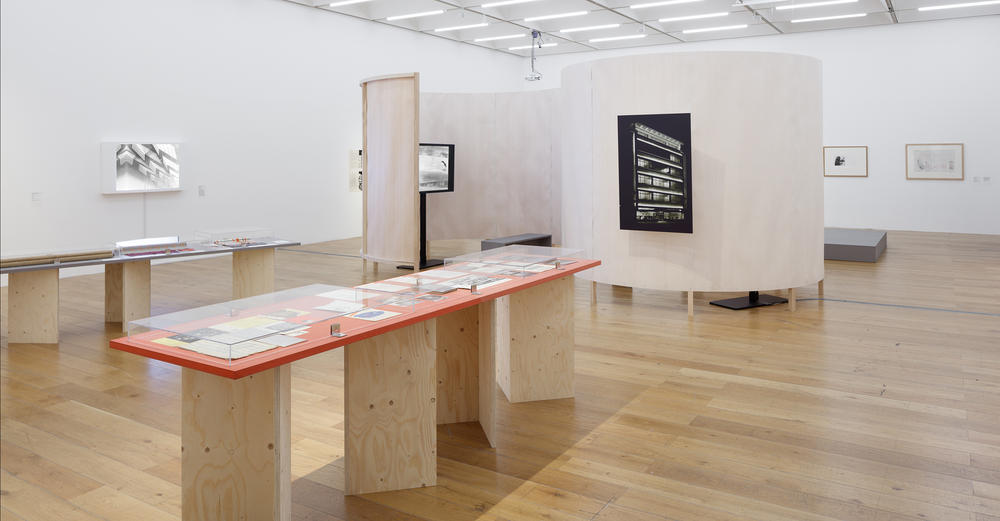
Clad steam bent timber frame that creates enclosures for screening films and separates the content of gallery 2
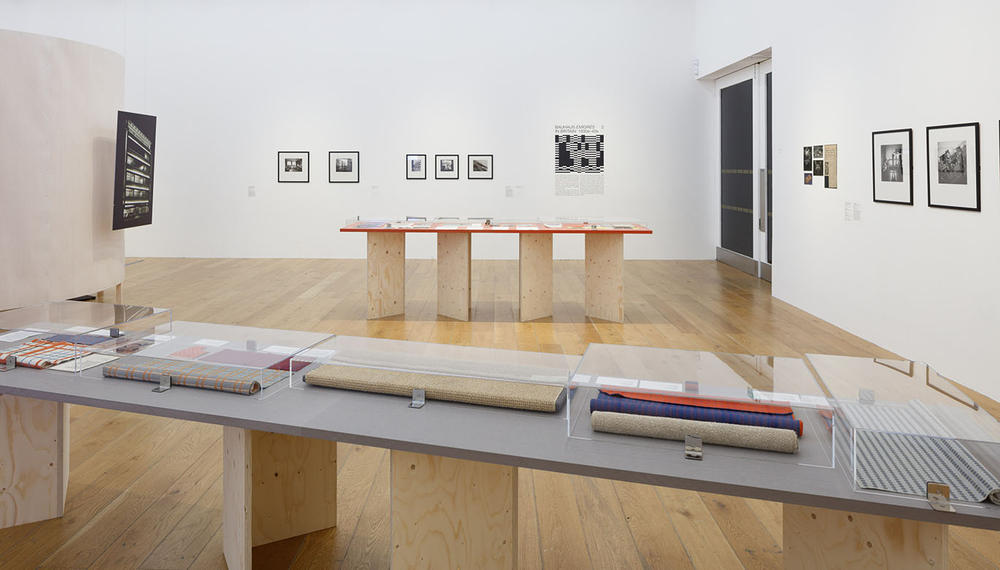
Long tables arranged as Isokon long chairs
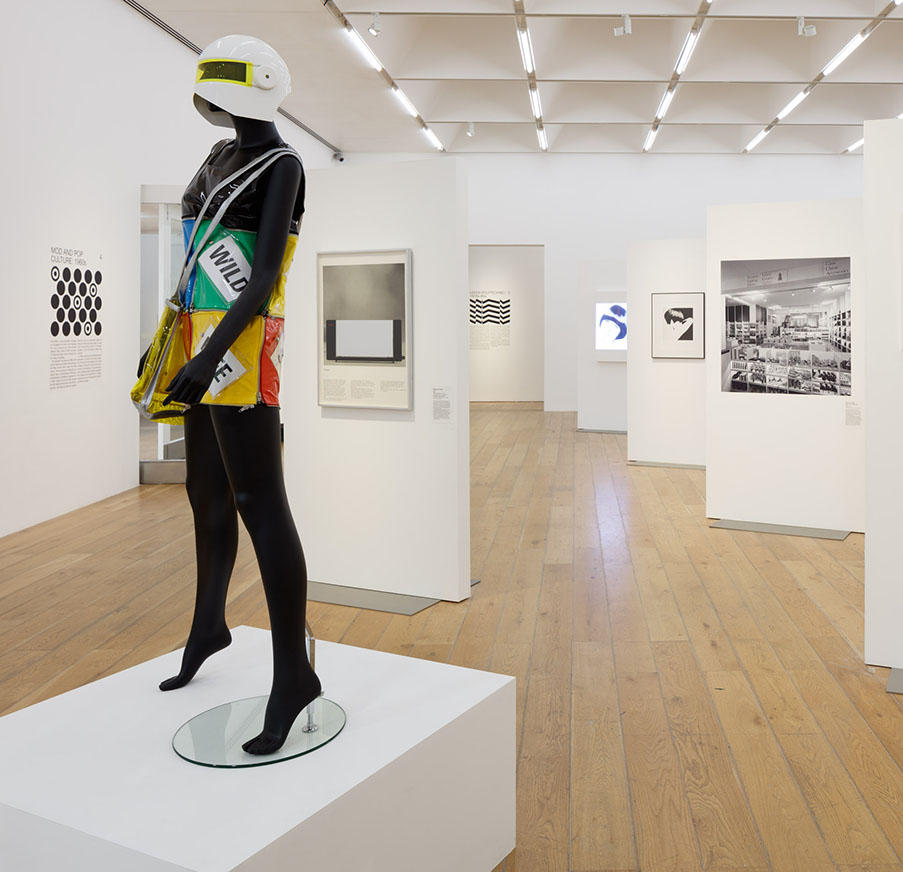
Gallery as shopfront
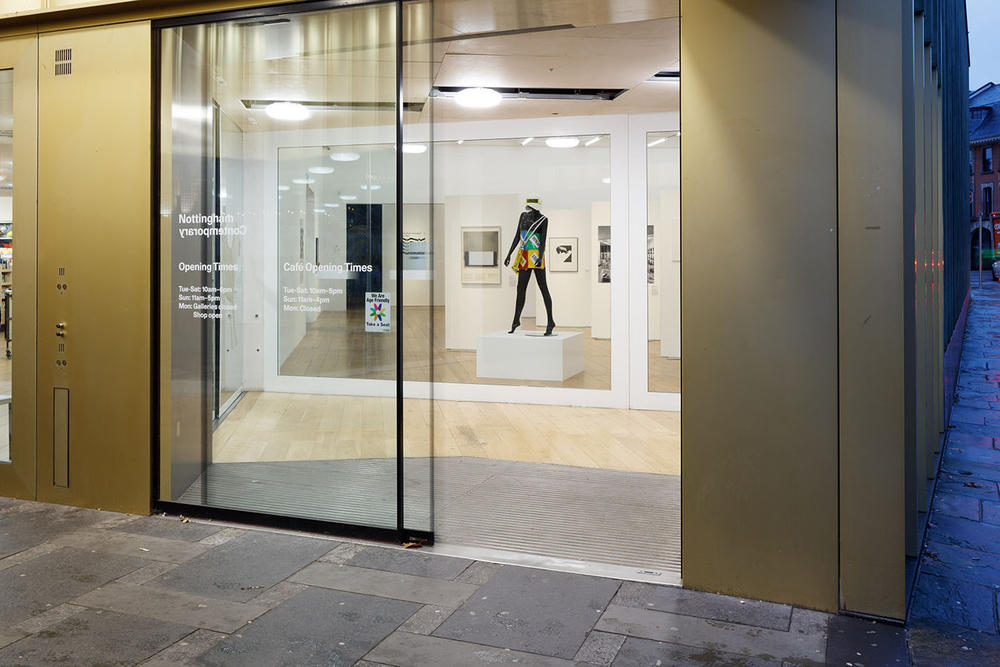
Gallery 3 presents the work of designers such as Quant, Sassoon and Conran who reimagined the aims of the Bauhaus for an era of consumerism and commercial design. Here, interior and exterior are merged and the full depth of the gallery is treated as a shopfront. All works are displayed on freestanding figures that visitors walk between and that are visible from the street.
The focus of Gallery 4 is 1980’s youth culture, which by way of art school bands, DIY publishing and club nights like the Blitz, looked back to the Bauhaus for inspiration and invoked the spirit of its theatre and parties. The gallery is designed as an immersive black box space with low seating and displays to lounge and spend time with the content.
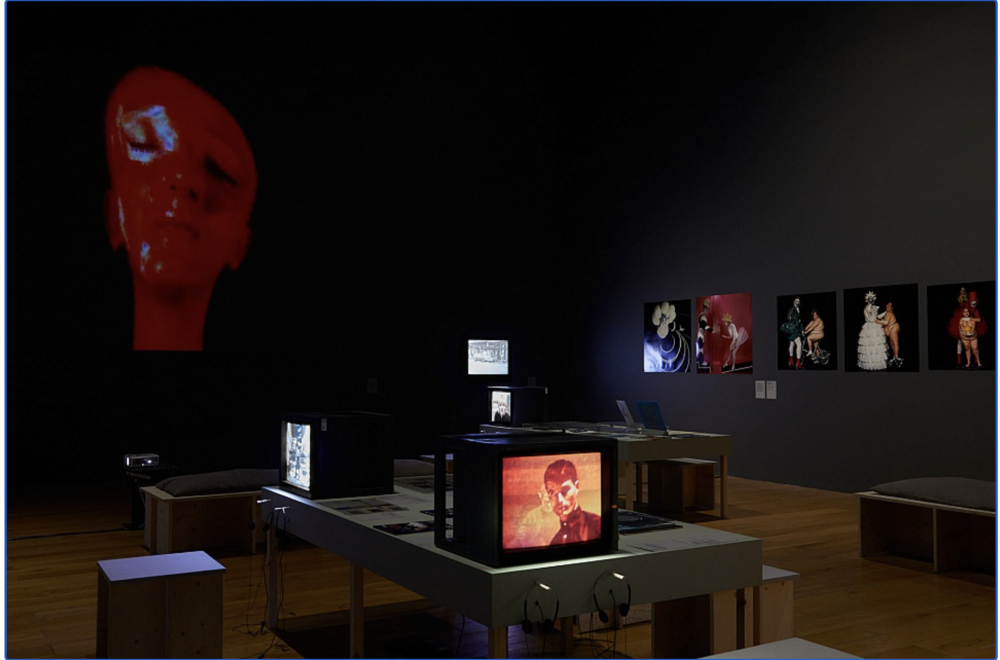
Double height black box with low seating and displays